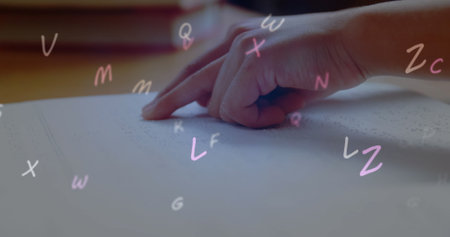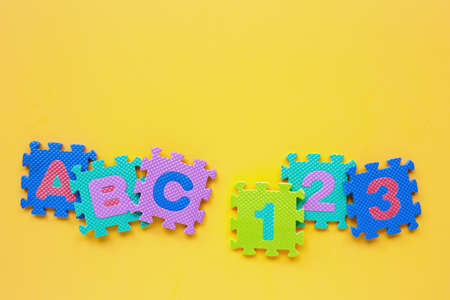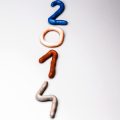Introduction to Personal Year Numbers
If youve ever wondered why certain years seem to bring more opportunities, challenges, or changes than others, youre not alone. Many people in the UK and around the world turn to numerology for insights into the patterns shaping their lives. One of the most approachable tools within numerology is the concept of the Personal Year Number. In essence, your Personal Year Number is a unique digit (from 1 to 9) that reflects the overall theme or energy you might experience in a given year. It’s calculated based on your date of birth and can offer guidance about what to expect and how best to approach the coming months. Whether you’re curious about making big decisions, planning for personal growth, or simply seeking a bit of direction, understanding your Personal Year Number could be an eye-opener. This guide is designed with a British audience in mind, using familiar language and examples relevant to everyday life in the UK. Let’s explore what Personal Year Numbers are all about, why they matter, and how this knowledge might help you navigate the year ahead with greater confidence.
2. The Numerology Basics You Need to Know
Before diving into the calculations, it’s essential to grasp some key numerology concepts and terminology, especially as they apply in the UK context. Numerology is the study of numbers and their mystical significance in our lives. In this straightforward guide, we’ll cover the building blocks you need for calculating your Personal Year Number.
What is Numerology?
Numerology interprets numbers as symbols with unique vibrations and meanings. Each number is believed to influence different areas of life, from relationships to career choices. The practice is popular in the UK, often used as a tool for self-reflection and personal growth.
Key Terms in Numerology
| Term | Definition (UK Context) |
|---|---|
| Life Path Number | The core number derived from your full date of birth, revealing your overall life journey and innate characteristics. |
| Personal Year Number | A yearly cycle number calculated from your birth date and the current year, indicating the themes and opportunities likely to arise over the next 12 months. |
| Master Numbers | Numbers 11, 22, and sometimes 33 are considered “master” due to their amplified energy and significance; in most Personal Year calculations, these are reduced to a single digit unless otherwise specified. |
| Reduction | The process of adding digits together until you get a single-digit result (1-9), which is standard practice in UK numerological methods. |
Single-Digit Focus
Most numerological analysis in Britain focuses on single-digit numbers (1-9), each associated with specific traits or cycles. For example, 1 stands for new beginnings, while 9 signals completion and reflection.
The Importance of Dates in UK Numerology
Your birth date plays a crucial role. While numerology systems may vary globally, the British approach commonly uses the day-month-year format for all calculations, aligning with UK standards.
Summary Table: Core Numerology Concepts for Beginners
| Concept | Description (Relevant for UK Users) |
|---|---|
| Date Format | Always use DD/MM/YYYY when working out your numbers. |
| Main Numbers Used | Focus on numbers 1-9; master numbers are often reduced except in advanced readings. |
| Cultural Relevance | Numerology is widely referenced in British lifestyle magazines and holistic wellness communities. |
This foundational knowledge will ensure you’re well-prepared for the step-by-step calculation process that follows. With these essentials in hand, you’ll be able to interpret your Personal Year Number accurately and meaningfully within a UK framework.

3. Step-by-Step Calculation Method
Working out your Personal Year Number is quite straightforward, and you don’t need to be a maths whizz to do it. Here’s a simple, step-by-step guide that you can use at home—whether you’re jotting notes in your diary or having a cuppa in your local café.
Step 1: Write Down Your Birth Date
Begin by writing down your date of birth in the British format: day, month, year. For instance, if your birthday is 15th April, note it as 15/04.
Step 2: Focus on the Current Year
Next, take the current year—for example, if we’re in 2024, use ‘2024’ for this calculation.
Step 3: Add Day + Month + Year Digits Together
Add together the digits of your day and month of birth with the digits of the current year. Let’s walk through an example using 15th April (15/04) and the year 2024:
- Day: 1 + 5 = 6
- Month: 0 + 4 = 4
- Year: 2 + 0 + 2 + 4 = 8
Add these results together: 6 (day) + 4 (month) + 8 (year) = 18.
Step 4: Reduce to a Single Digit
If you end up with a number greater than nine, add those digits together until you have a single digit. In our example, 1 + 8 = 9. So, your Personal Year Number would be 9.
A Typical British Example
Let’s say your mate was born on Boxing Day (26th December), and it’s still the year 2024. Here’s how they’d work it out:
Day: 2 + 6 = 8
Month: 1 + 2 = 3
Year: 2 + 0 + 2 + 4 = 8
Total: 8 + 3 + 8 = 19
Reduce further: 1 + 9 = 10, then again, 1 + 0 = 1. Their Personal Year Number is 1.
Quick Tip for Everyday Life
You don’t need anything fancy—just a pen and paper or even your phone calculator when you’re waiting for the bus or relaxing in the park. Once you know your Personal Year Number, you can start to explore what it means for you throughout the rest of the year.
4. What Your Personal Year Number Means
Once you have calculated your Personal Year Number, the next step is to understand its meaning. In numerology, each number from 1 to 9 carries its own unique energy and symbolism—think of it like how British seasons shape our moods and activities throughout the year. Below is a breakdown of what each number signifies, using analogies and references familiar within UK culture.
| Personal Year Number | Meaning | UK Cultural Analogy |
|---|---|---|
| 1 | New beginnings, independence, fresh starts | Like the buzz of New Year’s Day, full of resolutions and hope for new adventures |
| 2 | Partnerships, patience, cooperation | The calm and teamwork of a village fête—everyone pulling together for a common cause |
| 3 | Creativity, social interaction, self-expression | The lively atmosphere at Glastonbury Festival, brimming with creativity and connection |
| 4 | Stability, hard work, building foundations | The reliability of a well-kept allotment—steady progress through consistent effort |
| 5 | Change, freedom, adventure | The excitement of a spontaneous Bank Holiday road trip exploring the countryside |
| 6 | Responsibility, family, care for others | The warmth of a Sunday roast with family gathered round the table |
| 7 | Reflection, introspection, learning | A quiet stroll along the Lake District’s trails—time to ponder life’s bigger questions |
| 8 | Achievement, ambition, financial matters | The determination seen in running the London Marathon—setting goals and striving for success |
| 9 | Completion, compassion, giving back | The community spirit of Red Nose Day—wrapping up cycles and supporting others in need |
The Cyclical Nature: Like the Changing Seasons
Your Personal Year Number shifts annually in a repeating cycle from 1 to 9. This can be likened to Britain’s distinct seasons; just as we move from spring’s renewal to winter’s reflection, each number represents a different phase in your personal growth journey. Recognising which “season” you are in can help you plan ahead—whether it’s time to sow seeds for future growth or reap what you’ve worked hard for.
5. How to Make the Most of Your Personal Year
Once you’ve calculated your Personal Year Number, the next step is to harness its insights in your daily life. Below, you’ll find practical tips on applying what you’ve learned to work, relationships, and wellbeing—sprinkled with a few British touches and idioms for good measure.
Work: Putting Your Best Foot Forward
In the workplace, use your Personal Year Number as a guide for decision-making and goal-setting. For example, if you’re in a 1 Personal Year (a year of new beginnings), it might be the perfect time to throw your hat in the ring for a promotion or embark on a new project. In contrast, during a 4 Personal Year (a year of hard graft), focus on knuckling down and building solid foundations rather than taking big risks. Remember, don’t bite off more than you can chew—pace yourself according to the energy of your current cycle.
Relationships: Minding the Gap
Your relationships can benefit greatly from an awareness of your yearly theme. If you’re in a 2 or 6 Personal Year (times when cooperation and harmony are key), make an effort to mend fences and keep communication channels open. Be mindful of not putting all your eggs in one basket—diversify your social circle and nurture both old and new connections. If you need to clear the air with someone, now’s the time; as we say here, “a stitch in time saves nine.”
Wellbeing: Keep Calm and Carry On
Tune into your Personal Year Number to support your health and emotional balance. During introspective years (like a 7 Personal Year), give yourself permission to slow down, perhaps take up mindfulness or spend more time in nature—maybe even enjoy a brisk walk across the local common or park. Conversely, if you’re riding high on an energetic year (such as an 8), channel that buzz into regular exercise or creative pursuits. Above all, don’t let the grass grow under your feet—stay proactive about self-care.
Everyday Practice: Little by Little Does the Trick
You don’t have to overhaul your life overnight. Instead, make small adjustments based on your yearly theme. For instance, jot down monthly intentions aligned with your number or check in with yourself each Sunday over a cuppa tea—very British! Over time, these minor tweaks add up and help you stay on course.
Final Thoughts: Bob’s Your Uncle!
By integrating your Personal Year insights into daily choices at work, in relationships, and for self-care, you’ll soon notice positive shifts. Take it step by step—remember, Rome wasn’t built in a day—and before long, you’ll be making headway towards your goals. In true British fashion: keep calm and carry on!
6. Common Questions and Troubleshooting
Answers to Typical Queries
If you’re just getting started with calculating your Personal Year Number, you might find yourself scratching your head over certain bits. Below are some frequently asked questions, answered in a straightforward manner and with a British touch.
What if my birthday falls on the 29th of February?
No need for any faff—simply use 28th February as your birthday for calculation purposes in non-leap years. Numerology is more about patterns than strict calendar dates.
I’ve made a mistake with the addition – does it really matter?
It’s easy to slip up when adding numbers together, especially if you’re doing it in your head while enjoying a cuppa. Double-check your sums and remember: all numbers should be reduced to a single digit (except for master numbers 11 or 22).
Should I use my birth year or the current year?
This is a classic mix-up. For your Personal Year Number, combine your day and month of birth with the current calendar year. Your birth year is only used for other types of numerology readings, such as Life Path Number calculations.
Why do people get different results for the same calculation?
Confusion often arises from mixing up reduction methods. Stick to reducing each component (day, month, and year) separately before adding them together, or add everything up first and then reduce – just be consistent with your approach.
Troubleshooting Common Challenges
I keep ending up with two digits – what now?
If you land on double digits (except 11 or 22), just add those two digits together again until you have a single digit. For example, 14 becomes 1 + 4 = 5.
I’m not sure if I’m reading too much into my number
It’s easy to go down a rabbit hole! While Personal Year Numbers can offer some useful insights, remember they’re just one tool among many for self-reflection—don’t take it all as gospel.
When In Doubt
If you feel bogged down or muddled by conflicting advice online, refer back to this guide or seek out reputable British numerologists who can lend a hand. And above all, enjoy the process—it’s meant to be enlightening, not stressful!


